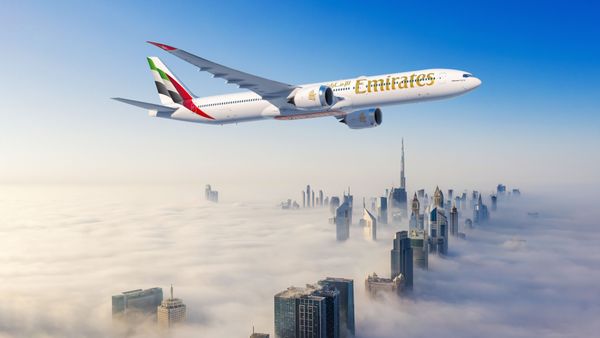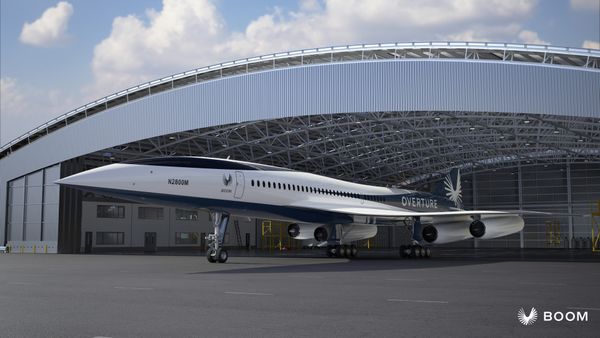The Essential Air Service (EAS) is a lifesaver for many rural communities who would otherwise have had no airline servicing connecting them to national hubs or route networks. We’ve explained what the program is and how it helps communities here in this article. Today, we are diving into the logistics behind how the US Department of Transportation (DOT) awards contracts to airlines to operate EAS routes and what specifically they look for.

What is noteworthy, however, is that the DOT issues proposals and selects airlines solely because the operation of EAS routes is not profitable; therefore, U.S. air carriers have no economic incentive to open the route themselves and therefore require heavy subsidization by the US DOT to remain profitable on the route.
The process all begins when the DOT completes a course of research and identifies airports in need of service or cities in need of growth at the airport. Once the airport has been identified, the DOT will issue a request for proposals to airlines that would be interested in providing service to the airport without a subsidy.
Seldom is this financially feasible, however, so the DOT will re-issue a request for proposals for subsidized service and will select the optimal airline to provide the service by using a bid system. Now, the real competition has begun, as airlines put together competing bids to have their service selected.

Airlines have to include a number of key details in their proposal, including contract length term, specific hub airports served, and previous history with operating EAS routes. However, the USDOT uses four criteria to rank bids against each other:
- Service reliability: typically the USDOT will request a number of roundtrips per week depending on aircraft capacity.
- Community views sourced from community outreach.
- Interlining arrangements with a larger carrier at proposed hubs.
- Contractual and marketing arrangements with a larger carrier at a hub airport.

Importantly, the subsidy required by the USDOT to compensate the airline is not a deciding factor, and therefore the bidding system is not a low-bid system. The subsidy system, though, is of utmost importance since the USDOT needs to plan a budget for EAS every year.
USDOT will conduct a financial analysis between each proposal to estimate the subsidy necessary to maintain the service. Each interested airline will submit financial data covering estimated overhead costs and revenue based on load factor and passenger predictions.
After calculating the net operating loss for each airline (all EAS services run at a loss), the DOT will calculate the required annual compensation for an airline to obtain a 5% profit element.
To see this more clearly, imagine a simple case: Airline A expects to make $1 million in revenue from the service, but operating costs amount to $2.5 million. Therefore, the net operating loss is $1.5 million. For the DOT to compensate enough for the airline to reach a net profit element of 5% of operating expenses (in this case $125,000, which is 5% of $2.5 million), Airline A will receive $1.625 million from the US government—enough to cover the operating loss and add an additional $125,000 to the balance sheet.
Such compensation is provided on a per-flight basis, as opposed to a one-time subsidy. This became notable during the early days of the COVID-19 pandemic when the USDOT announced that airlines could curtail EAS routes and still receive up to 50% of the pre-allocated per-flight subsidy.

Typically, the USDOT will list ideal hubs they wish to be connected to the new EAS airport; this often rules out certain airlines from operating EAS routes, namely Ultra Low-Cost Carriers like Spirit and Frontier, who rely on focus cities. Further, they often don’t have smaller planes to operate EAS routes and don’t partner with a regional carrier, such as Skywest, to operate EAS routes on their behalf.
Airlines can add extra information to their proposal that may give them a competitive edge. Airlines can market themselves in their bid based on unique characteristics or “personality” per se, which may give a smaller, private regional company an edge over a carrier contracted by a major U.S. legacy carrier like Delta or United.
The USDOT uses additional key details to analyze the likelihood of success from an interested airline. As an example, a review between SkyWest and Air Choice One will reveal key differences in what regional destinations are currently accessible under the EAS by each carrier and will highlight extreme capacity differences between the two airlines.

After receiving all the important information from the airlines, the USDOT importantly conducts community outreach, which is one of the four factors airlines evaluate bids on. Community outreach is important in guiding the USDOT’s choice, especially if the community has complaints about certain airlines or a preference for others.
After speaking with executives at the airport about the proposed service, residents in the city requesting service, and other various individuals, the DOT will select the airline and award the subsidy. Yet, that doesn’t mean community outreach ends there.

When important decisions are made on the status of existing EAS routes, community members will be consulted further. The COVID-19 serving curtailing is an important example since community members in EAS-served cities had the final say in service cuts by being able to veto an airline’s request to reduce flights.
Ultimately, airlines are selected based on the likelihood of strong performance metrics and community relations. The bid system has been successful for a while and should continue to remain strong going forward.
LOT Polish Airlines Announces New Route to San Francisco » Emirates Orders 65 Additional Boeing 777-9 at Dubai Airshow 2025 » Meet the Startup Building the Plane Everyone Else Said Was Impossible »
Comments (0)
Add Your Comment
SHARE
TAGS
INFORMATIONAL EAS Contracts DOT Service Economics Essential Air Service Regional AirlinesRECENTLY PUBLISHED
 Emirates Orders 65 Additional Boeing 777-9 at Dubai Airshow 2025
Emirates has announced an order for an additional 65 Boeing 777-9X aircraft today at the Dubai Airshow. This deal, valued at USD $38 billion, brings the airline's total 777-9X order count to 270 units. The agreement also includes options to convert orders 777-8 or 777-10 variants.
NEWS
READ MORE »
Emirates Orders 65 Additional Boeing 777-9 at Dubai Airshow 2025
Emirates has announced an order for an additional 65 Boeing 777-9X aircraft today at the Dubai Airshow. This deal, valued at USD $38 billion, brings the airline's total 777-9X order count to 270 units. The agreement also includes options to convert orders 777-8 or 777-10 variants.
NEWS
READ MORE »
 The Hidden Pilot Problem That Could Make or Break Boom's Supersonic Jet
AeroXplorer recently spoke with Tristan Brandenburg, Boom Supersonic's Chief Test Pilot. In conversation, it became evident that in the months leading up to Overture's rollout, one of Boom's most complex challenges might not be in the wind tunnel, but in the cockpit.
STORIES
READ MORE »
The Hidden Pilot Problem That Could Make or Break Boom's Supersonic Jet
AeroXplorer recently spoke with Tristan Brandenburg, Boom Supersonic's Chief Test Pilot. In conversation, it became evident that in the months leading up to Overture's rollout, one of Boom's most complex challenges might not be in the wind tunnel, but in the cockpit.
STORIES
READ MORE »
 LOT Polish Airlines Announces New Route to San Francisco
LOT Polish Airlines has announced a new direct route from Warsaw to San Francisco, enhancing connectivity between Europe and a major U.S. technology hub. This route presents significant opportunities for both business and leisure travelers alike.
ROUTES
READ MORE »
LOT Polish Airlines Announces New Route to San Francisco
LOT Polish Airlines has announced a new direct route from Warsaw to San Francisco, enhancing connectivity between Europe and a major U.S. technology hub. This route presents significant opportunities for both business and leisure travelers alike.
ROUTES
READ MORE »



